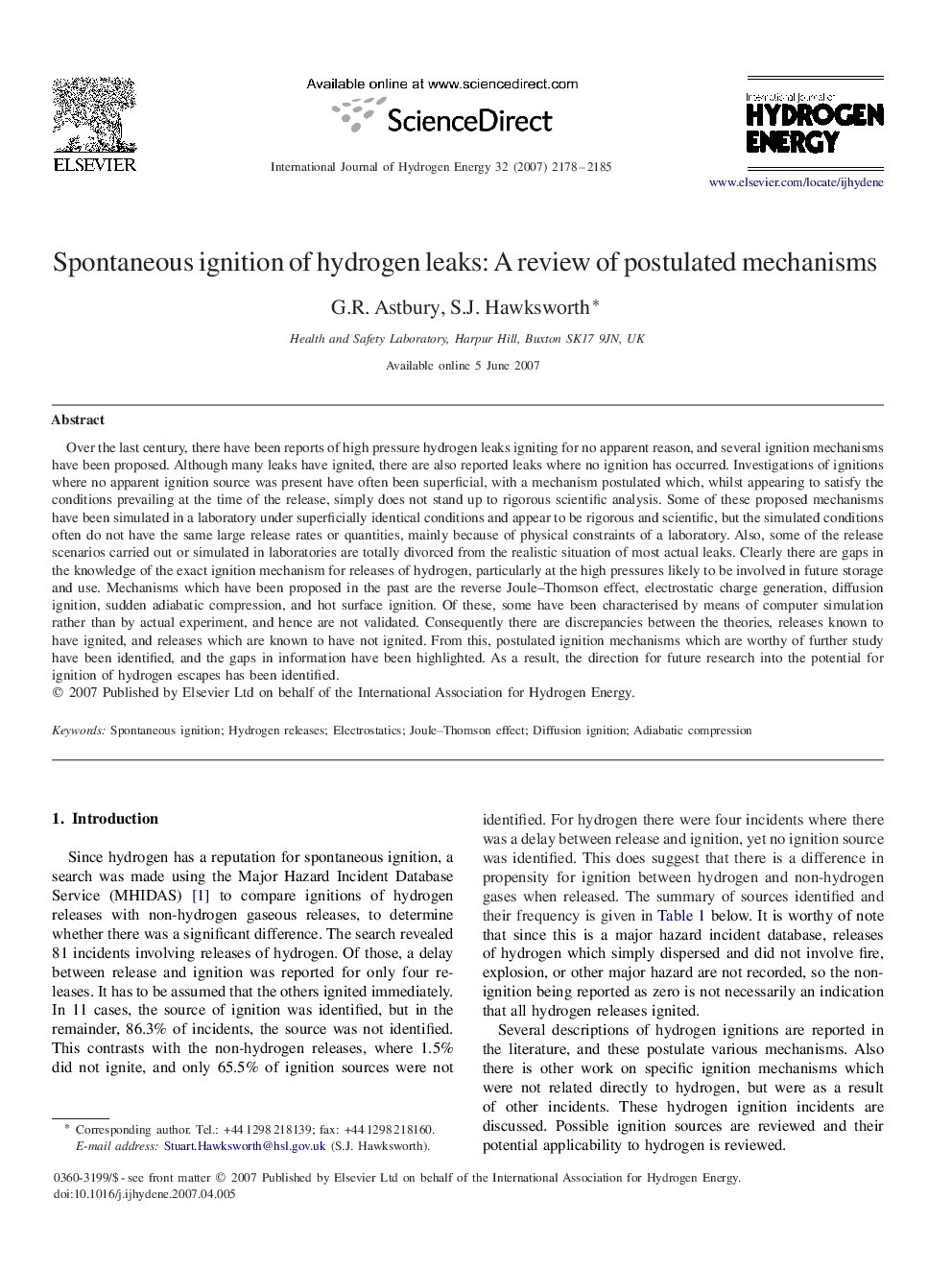| Article ID | Journal | Published Year | Pages | File Type |
|---|---|---|---|---|
| 1280318 | International Journal of Hydrogen Energy | 2007 | 8 Pages |
Over the last century, there have been reports of high pressure hydrogen leaks igniting for no apparent reason, and several ignition mechanisms have been proposed. Although many leaks have ignited, there are also reported leaks where no ignition has occurred. Investigations of ignitions where no apparent ignition source was present have often been superficial, with a mechanism postulated which, whilst appearing to satisfy the conditions prevailing at the time of the release, simply does not stand up to rigorous scientific analysis. Some of these proposed mechanisms have been simulated in a laboratory under superficially identical conditions and appear to be rigorous and scientific, but the simulated conditions often do not have the same large release rates or quantities, mainly because of physical constraints of a laboratory. Also, some of the release scenarios carried out or simulated in laboratories are totally divorced from the realistic situation of most actual leaks. Clearly there are gaps in the knowledge of the exact ignition mechanism for releases of hydrogen, particularly at the high pressures likely to be involved in future storage and use. Mechanisms which have been proposed in the past are the reverse Joule–Thomson effect, electrostatic charge generation, diffusion ignition, sudden adiabatic compression, and hot surface ignition. Of these, some have been characterised by means of computer simulation rather than by actual experiment, and hence are not validated. Consequently there are discrepancies between the theories, releases known to have ignited, and releases which are known to have not ignited. From this, postulated ignition mechanisms which are worthy of further study have been identified, and the gaps in information have been highlighted. As a result, the direction for future research into the potential for ignition of hydrogen escapes has been identified.
